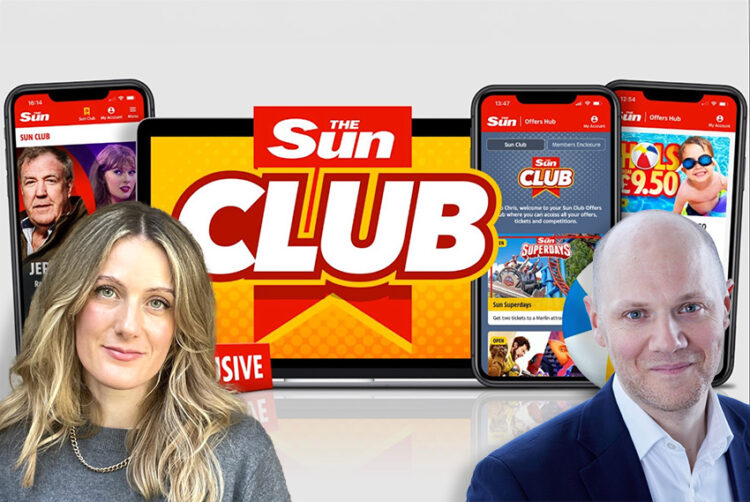‘Place as many bets as possible’: Behind The Sun’s hybrid paywall strategy

Last week, The Sun announced it was putting up a partial paywall as part of a new membership offering dubbed Sun Club. In doing so, the tabloid has begun locking away a small portion of its content for the first time since it scrapped its previous hard paywall strategy nearly a decade ago.
Why make such a significant strategic change to business strategy now?
“I think we’re all aware of the challenges and the need to diversify revenue streams,” admitted Sun digital director Will Payne in conversation with The Media Leader. “I think people need to take and place as many bets as possible in this market and try to create as many co-existing revenue streams as possible.”
Sun Club will cost £2 per month for access to newly paywalled content, as well as additional membership benefits including promotions.
The initial raft of paywalled content includes Jeremy Clarkson’s column and agony aunt feature Dear Deidre. According to Rachel Shields, assistant editor and editorial lead on the Sun Club proposition, The Sun is taking a “test-and-learn strategy” to what it decides to put behind the paywall. This could include investigatory reporting, which will be considered on a “case-by-case basis”.
Indeed, Shields said the editorial team will be “really flexible” about the number of articles that are put behind a paywall on a given day, estimating that it would be amount to 10-15 articles on average. For reference, Payne said The Sun publishes on average 550-600 articles per day.
The relatively small percentage — which Payne referred to as an “appropriate” proportion — appears to mimic competitor Daily Mail’s subscription programme, Mail+, which puts a similar number of articles behind a paywall each day.
Co-existing models
Sun Club has been in development for the past nine months, after the idea “emanated” from senior leadership at The Sun. Payne and Shields described it as a collaborative development between editorial and commercial teams, and expressed confidence in its potential to obtain members and drive a new revenue source.
“We have fantastic columnists and fantastic features, and we do believe — through research and through a variety of other things — that people will be willing to pay,” expressed Payne.
He argued that the consumer media landscape has changed in recent years to make it more likely that a subscription product would work today than in years past.
“You see with the rise of Substack and all these other channels — people are prepared to pay for quality content maybe in a way that they weren’t before,” Payne continued.
He added that the “fundamental point” for Sun Club is that it is a hybrid model, not a hard paywall. For a “popularist” news brand that looks to “break revelatory stories” like The Sun, a hard paywall does not make strategic sense, Payne argued.
“Obviously competitors rip that content off,” he explained, referring to what happened during The Sun‘s previous attempt to institute a paywall last decade. “Before long, a lot of your content is free elsewhere.
“That’s [also] a challenge we face now, but we think we’ve come up with some techniques, some approaches, that we think will help us to retain our IP [intellectual property] a bit better than before.”
Data strategy
While Sun Club aims to drive direct business results through subscription revenue, it will also play a part in The Sun‘s broader data strategy.
Nucleus, parent News UK’s first-party data platform and ad-planning tool, has previously been described as central to driving The Sun‘s commercial success.
To further develop its first-party data opportunity, The Sun launched a registration wall in October to require users to sign up to access premium content and now it seeks to glean further information useful to both the editorial and commercial teams.
Payne said the registration wall was used as a “funnel” in preparation for Sun Club and user insights provided helpful information for developing the membership programme.
“There’s a logic that suggests that if people are more likely to register for something, then they’re more likely to join a membership,” Payne explained.
He noted that The Sun is particularly sensitive to the behaviours of its “true direct” audience (ie. readers who don’t come purely from referral traffic) and believes the content such users engage with most “has the highest value from a membership perspective”.
Payne added: “The more data we can acquire, the more we can get to know our users — then the more valuable they are to us, but [also] we are to them.”
Not only is increasingly robust user data valuable to advertisers, but it is also “fascinating to view” from an editorial perspective, according to Shields, as it can be used to inform editorial decisions to “give audiences more of what they want”.
“We want [members] to feel like they’re getting good value from Sun Club,” Shields concluded.



